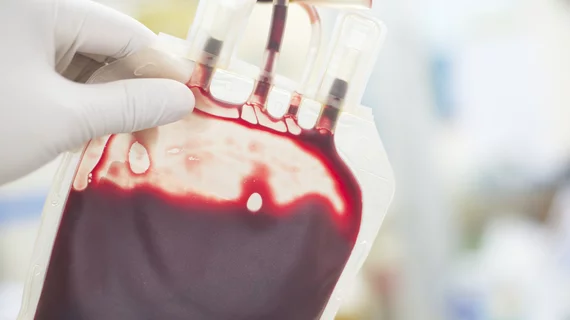A simple educational initiative designed to show cardiac surgeons how often they used blood transfusions—and how much they cost—helped one heart center significantly cut its rate of blood utilization and save a projected $500,000 each year.
Previous research contends blood transfusions aren’t necessary in roughly 40 percent of cases and one unit of red blood cells costs about $1,100. Looking to reduce the rate of inappropriate blood transfusions without sacrificing quality, Lori Shannon, MBA, RN, with St. Vincent Heart Center in Indianapolis, and colleagues provided surgeons with provider-level data on their transfusion rates, transfusion costs per case and average lengths of stay for their patients. They also consulted established evidence and national benchmarks for support on when transfusions are medically necessary and when they can be avoided.
“We were able to separate it out not only by physician but also by pre-op, intra-op and post-op, and really take a look at where our opportunity was,” Shannon told Cardiovascular Business. “In this case, just by raising awareness with the surgeons and taking a look at the data and the science and cost … we were able to see our rates go down, and further from there the physicians started taking actions to try to actively reduce blood transfusion rates when appropriate.”
The study, which Shannon presented last week at the American College of Cardiology’s Cardiovascular Summit in Orlando, found blood utilization dropped from 37.8 percent to 27.7 percent among Heart Center physicians over a six-month period. The results were pooled from those surgeons’ operations both at their physician-owned practice as well as a large hospital in Indianapolis.
With this decline in transfusions, the average cost per case for blood products dropped from $573 to $361 over the six-month period, with an estimated annual savings of $500,000. The initiative started by looking at coronary artery bypass graft (CABG) surgeries, but progressed to included other heart surgeries and transcatheter aortic valve replacement (TAVR), as well.
Notably, quality measures didn’t change much during the six months when transfusion rates dropped, and in some cases showed a trend toward improving.
- Average length of stay dipped from 7.2 days to 7.0 days.
- In-hospital, risk-adjusted mortality remained at 1.2 percent.
- Renal failure increased from 1.0 percent to 1.1 percent.
- Readmissions declined from 5.7 percent to 5.2 percent.
“We’re hoping that as we continue to monitor this, it will actually be even a bigger impact on quality because the data shows that there are issues with the more transfusions you give, the more side effects that patients have,” Shannon said.
Shannon said key parts of the initiative included standardizing order sets and making sure the surgeon was in charge of deciding whether patients received blood transfusions. Previously, other physicians or advanced practice providers may have been responsible for ordering blood.
“Because the surgeon knows the patient, he knows what’s safe for that patient and is able to make that decision based on the clinical indications,” she said.
The data-driven intervention could be easily replicated in other settings, Shannon suggested. However, one element that may take either additional education or extra consideration is how to address cases in which multiple physicians are involved in a surgical patient’s care.
“I was talking with someone earlier who was challenged with the pre-op side because the physicians that manage pre-op were not the same ones as the surgeons … so there could be some barriers like that as far as who’s in charge of the patient at different phases of care,” Shannon said. “Obviously, surgery and immediately post-op is going to be the surgeon but pre-op is an impact, too. If we don’t treat the patient’s anemia up front, then you get into surgery and now you’re in trouble.”

